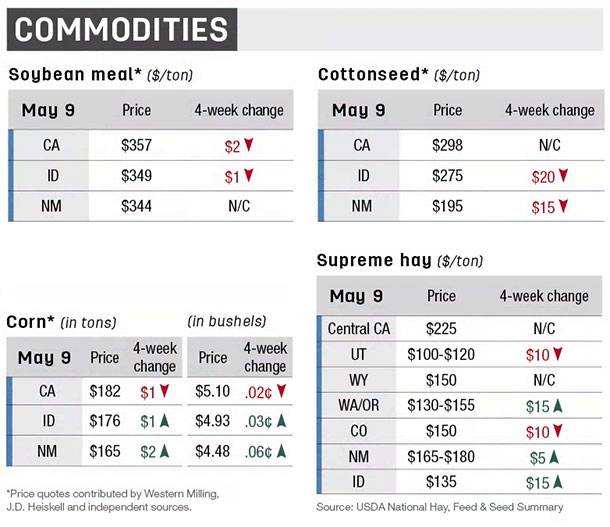The grazing season is finally here, and grazing irrigated land has garnered some renewed interest due to changing market dynamics. The economics of grazing irrigated pasture can be challenging but often more productive than haying. Regardless, proper management is always the single biggest factor affecting forage quality and quantity, along with attention to detail. Since grazing management is so critical to your bottom line, here are a couple of considerations to help set you up for success.
1. Consider an intensive strategy – Increasing the intensity of pasture management can oftentimes increase pasture productivity. Intensity meaning leaving sufficient residual and returning to a pasture more frequently (i.e., intensive management). Maintain adequate residual to allow for maximum recovery (3 to 8 inches).
Utilize several paddocks (minimum of five to six) grazed for short periods at high intensities. Make sure to balance use and recovery periods. Depending on the forage species, rest periods for rotations can range from 20 to 40 days.
2. Consider designing a flexible plan – Stocking rate is key to maximizing irrigated pasture. Think about increasing stock density but adjust based on pounds of cattle and productivity of the pasture. A typical range would be 15,000 to 25,000 pounds per acre during short grazing periods (three to five days).
Low stocking rates allow cattle to selectively graze, which reduces plant diversity and overall pasture health. Consider using temporary fence to improve grazing distribution. Move cattle according to forage production. Remove cattle from pasture while irrigating and wait three to four days after irrigating to avoid plant damage and soil compaction.

Wait until pasture height is above 6 to 8 inches before grazing and do not graze shorter than 3 inches. Keep grazing records to avoid grazing the same pasture at the same time in consecutive years.
3. Consider taking inventory of resources – Start by creating a pasture map that identifies current irrigation systems, fences, stock water and acreage. Inventory changing nutrient requirements of cattle. Test irrigation water for excess salt and mineral levels (i.e., too high = low soil fertility).
Monitor soil moisture to determine when to irrigate (50 percent of soil capacity during growing season). Walk pastures frequently to assess forage production. Decide which paddock cattle will move to next.
The need for increased attention to pasture and cattle is the common link among each consideration. Intensive grazing systems require greater management. However, healthier pastures lead to increased productivity and profitability.








